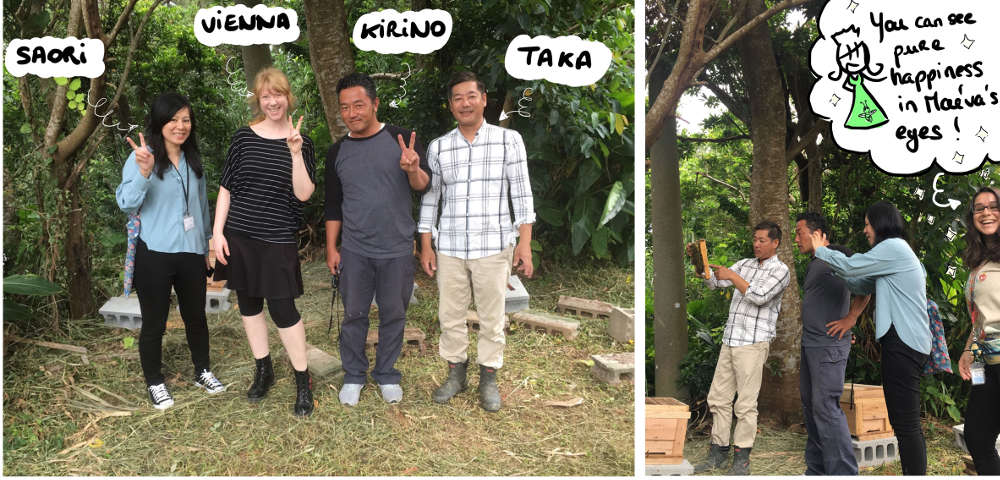How honey bee could help to protect Okinawan coral reefs
We are highly excited to start a new research project in collaboration with Onna Village Office (where OIST is located). This collaboration is part of the Red Soil project from Onna Village and our own honeybee/microbiome/parasite research in the Mikheyev Unit. The connection may sound surprising at a first view: “bees save coral”, but the intelligent idea of Onna Village office is to promote beekeeping in farmlands to grow diverse flowers, which would ultimately help to reduce red soil erosion in the sea threatening corals.

You can read more on this OIST article nicely covered by Christopher Richarson.

Our research Unit offered to use ~15 of our Western honey bee colonies (Apis mellifera 西洋ミツバチ) to promote the Onna Village project and to foster closer interactions between OIST and Onna Village. More excitingly, our bee team and Onna village office want in joint effort establish the Japanese honey bee (Apis cerana japonica 日本のミツバチ) here in Okinawa for research purposes and beekeeping.

With the great help of Onna Village we already received two Japanese bee colonies, which are the only ones on Okinawa so far. The Onna Village beekeepers are taking care of the Japanese honey bees, and once the bees adapted to Okinawa, they can start producing rare honey. The profit from selling the honey will benefit the Red Soil project. Also, educational tours to the honey bees showing e.g., the differences between the two species would be possible in the future.
Japanese bees are exceptional as they are the original host of the devastating parasite Varroa destructor (ミツバチヘギイタダニ) but in contrast to Western bees, can defend themselves very well. They also show other extraordinary abilities such as heat-balling against hornets (スズメバチ.) Thanks to the Onna Village’s extensive work and effort in taking care of the colonies, we will also be able to tackle diverse important research questions regarding differences between Western and Japanese honey bee regarding microbiome and parasite adaptation.
